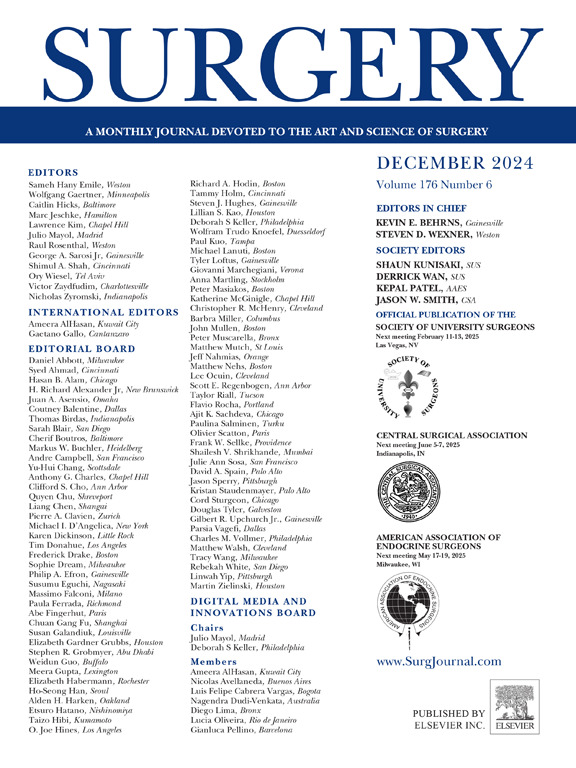Home care visits: The key to reducing loss to follow-up in emergency colorectal surgery
IF 3.2
2区 医学
Q1 SURGERY
引用次数: 0
Abstract
Background
Emergency colorectal surgery has a high incidence of postdischarge complications, and loss to follow-up can delay the identification of complications. Amid evolving postdischarge care practices, it is important to assess predictors of loss to follow-up. We aimed to characterize the predictors of loss to follow-up.
Methods
We conducted a retrospective institutional cohort study of patients ≥18 years undergoing emergency colorectal surgery at a tertiary hospital from 2016 to 2022. We excluded patients with in-hospital or 30-day mortality or a postoperative stay >30 days. We defined loss to follow-up as the absence of a postdischarge 30-day in-person or telehealth visit. The predictors of loss to follow-up were evaluated using stepwise regression analysis. We performed a subgroup analysis evaluating predictors of loss to follow-up among patients discharged post-telehealth availability at our institution (March 2020).
Results
We included 426 patients, of whom 95 (22.3%) were loss to follow-up and 58.9% were discharged post-telehealth availability. Almost one half of patients were female (52.3%), and the majority were of White race (89.2%), and non-Hispanic (92.0%). Being male, being discharged to a skilled nursing facility, and prolonged hospitalization were risk factors for loss to follow-up, whereas receiving home care visits was protective. Post-telehealth availability, being male, and prolonged hospitalization were risk factors for loss to follow-up, whereas receiving homecare visits was protective. Patients who had a follow-up visit were less likely to be readmitted to the hospital and have a visit to the emergency department.
Conclusion
Receiving home care visits was the most protective factor for preventing loss to follow-up. Living far from the hospital remained a risk factor even post-telehealth availability. High-risk patients may benefit from targeted interventions that include scheduled home care visits.
求助全文
约1分钟内获得全文
求助全文
来源期刊

Surgery
医学-外科
CiteScore
5.40
自引率
5.30%
发文量
687
审稿时长
64 days
期刊介绍:
For 66 years, Surgery has published practical, authoritative information about procedures, clinical advances, and major trends shaping general surgery. Each issue features original scientific contributions and clinical reports. Peer-reviewed articles cover topics in oncology, trauma, gastrointestinal, vascular, and transplantation surgery. The journal also publishes papers from the meetings of its sponsoring societies, the Society of University Surgeons, the Central Surgical Association, and the American Association of Endocrine Surgeons.
 求助内容:
求助内容: 应助结果提醒方式:
应助结果提醒方式:


